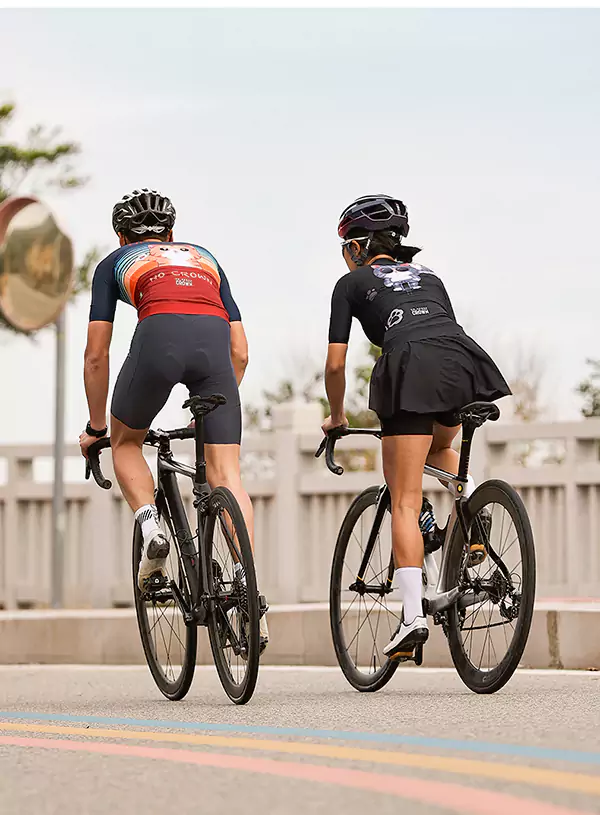If you’re in the market to choose cycling shoes, it can seem like a dizzying selection of options to choose from. Different types of cycling shoes are designed for road biking, mountain biking, indoor cycling and more. Then there are considerations like budget, level of experience, pedal compatibility and desired features. How do you know where to even begin? In this post, we will discuss the importance of wearing cycling shoes and how to choose cycling shoes.
Importance of Wearing Cycling Shoes
If you’re new to cycling, you may wonder why you need special cycling shoes at all. Can’t you just wear your regular sneakers or other athletic shoes? While that may seem convenient, dedicated cycling shoes provide significant benefits for performance, comfort, and safety that make them well worth the investment for any serious cyclist.
Cycling shoes are designed specifically for maximizing power transfer to the pedals. Their stiff, rigid soles prevent energy loss compared to the flexible, compressible soles of regular shoes. When you push down on the pedals wearing cycling shoes, nearly all of your effort is transferred through the pedal to the drivetrain to propel you forward. Stiff carbon fiber soles on road cycling shoes are especially effective for this. Mountain bike shoes also have stiff soles but allow enough flexibility for some walking over rough terrain.

Cycling shoes are also more comfortable for long rides thanks to their contoured shapes, breathable uppers, and padded tongues and collars. Your feet stay securely in place and supported to prevent pain and hotspots over hours of cycling. If you use clipless pedals, cycling shoes also provide an interface between your feet and the pedals, protecting them from discomfort. Many higher-end shoes also have heat-moldable soles that can be custom shaped to your unique foot shape for the perfect fit.
Perhaps the most significant benefit of cycling shoes is the ability to attach securely to clipless pedals. These pedals lock your feet in place for maximum pedaling efficiency, power transfer and control. Being locked into the pedals allows you to pull up as well as push down during the pedal stroke, which can increase your power by up to 30% compared to using platform pedals with normal shoes. It also ensures your foot remains in the optimal position over the pedals at all times.
Cycling with clipless shoes and pedals also provides significantly improved handling and control for riding, especially over rough roads or trails. Being attached to your bike gives a feeling of stability and security. You can also use techniques like pulling up slightly on pedals to make minor steering corrections. This translates to better confidence and safety when riding.
Beyond performance and function, cycling shoes need to fit properly and be well-constructed for durability. They should have enough room in the toe box for your toes to swell during long rides, but remain snug through the midfoot and heel. Velcro straps, buckles and ratcheting closures allow for a customized fit. Well-made cycling shoes can last for years if properly maintained.
While getting accustomed to clipping in and out of pedals does take practice, the benefits of cycling shoes far outweigh any hassle. For road cycling, mountain biking, cyclocross or bike touring, a pair of quality cycling shoes matched with compatible pedals will make your riding experience safer, more comfortable, efficient and powerful. Your feet and legs will thank you for the enhanced support and efficient power transfer. If you’re ready to take your cycling to the next level, proper cycling shoes are a must-have.
How to Choose Cycling Shoes?
Here are some tips to consider when choosing cycling shoes:
- Choose between road biking shoes and mountain biking shoes. Road biking shoes are for cycling on paved roads, while mountain biking shoes are designed for off-road trails. Road shoes are very rigid for maximum power transfer, while mountain shoes are more flexible and have grippy soles for walking over rough terrain.
- Determine if you need clipless shoes. Clipless cycling shoes lock onto special pedals for optimal efficiency. Non-clipless shoes just have flat bottoms and allow easy on-and-off. Clipless shoes take some practice to master but enable full power pedaling. For most road cyclists and serious mountain bikers, clipless shoes are preferred.
- Make sure there is enough clearance for your feet. Try on shoes with any custom insoles or orthotics you may use. Stand and simulate pedaling. There should be about a thumb’s width of space from your longest toe to the end of the shoes. The width should match your foot profile without too much looseness or tightness.
- Choose a proper closure method. The most common options include velcro straps, buckles, laces, and ratchet straps. Velcro straps are easy to adjust, buckles can withstand high forces, ratchet straps provide micro-adjustability, while laces distribute pressure the most evenly. Consider your priorities between adjustability, durability and comfort.
- Focus on the outsole. For road shoes, look for a very stiff carbon fiber outsole for maximum power transfer. Mountain bike shoes should have grippy rubber lugs that can handle dirt and mud. Recessed cleats are best for easier walking.
- Consider extra features. Additional features to look for include ventilation panels for breathability, heel grips for stability, toe box and upper protection, and waterproofing if riding in wet weather. Higher-end shoes may also have heat-moldable uppers for customized fit.
- Set a budget. Cycling shoe prices range from under $100 up to $500 or more for high-performance shoes. You can get a good pair of starter clipless shoes for around $150 to $200. Only go higher if you have specialized needs or are a competitive cyclist.
Hope this helps you find cycling shoes that match your needs and riding style. Let me know if you have any other questions!
